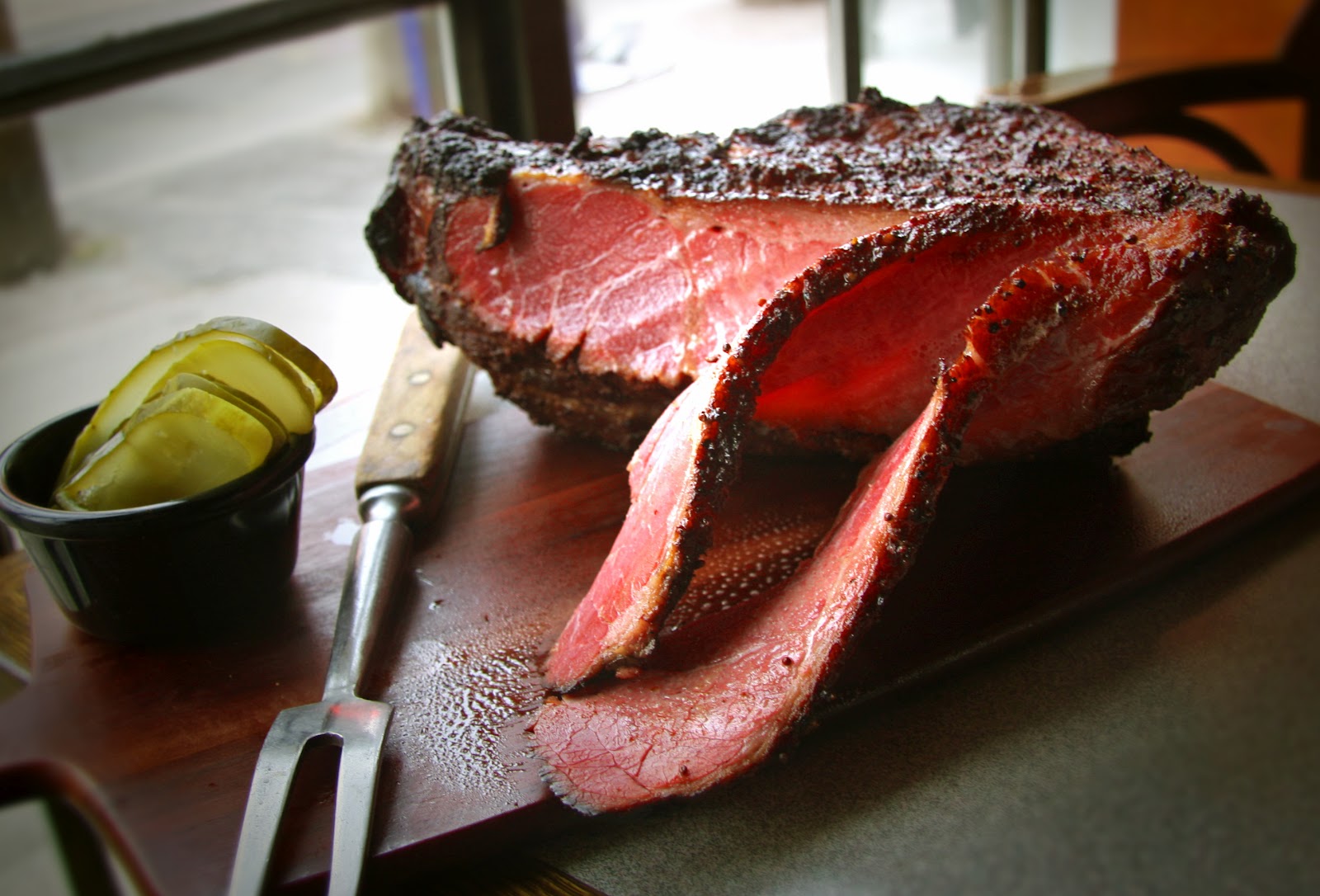Cooked up some Pastrami!
Smoked for 4 and half hours and then steamed for an hour and a half.

Before I was a chef, certain food was easily understood. Roast beef was a cut of beef roasted. Boiled carrots, grilled fish needed no explanation. Other foods were a mystery. Pastrami and corned beef in particular were fascinating to me. It’s delicious, but what is it? It looks like meat but is salty ,sweet, spicy, and a strange red colour no matter how long you cook it. My mom would buy it sometimes in these little boil in the bag portions from Shopsy’s. It was a treat and I loved it. As a teenager if we were at a movie or something I would pick a Druxy’s deli sandwich over a Big Mac whenever I could. In 1986 I moved to Kensington market and started cooking school. I began to learn things. I began to understand deli.
 |
| Kensington Market through the ages |
 |
| Old Kensington Market |
Starting in the 1920’s Kensington Market was the centre of the Jewish community in Toronto and much like New York or Montreal kosher delicatessens opened up to serve the community. Shopsy’s and Switzer’s were two of the better known delis, but there were several others. As time went on newer immigrants moved in and much of the Jewish community moved north where a new generation of delis opened up around the area of Bathurst and Lawerence.
 |
| Some delis in Toronto |
Switzer’s was a great retro experience. Diner style booths and lunch counter. Faded autographed pictures. I don’t remember the food very well, but the atmosphere was exciting. When I graduated and started making more money, I started hitting the north Toronto delis and worked my way though the menus. Corned beef at Pancer’s, knish and latkes at Marky’s, matzo ball soup or frankfurters and beans at Yitz’s. It was all pretty great, but I still don’t get gefilte fish.
So what is pastrami, and why is it associated with the North American Jewish community? Pastrami is a variation on the Romanian word pastramă which indicates something that is preserved. Some of the first Jewish immigrants to New York were from Romania and they brought the recipe for this cured and smoked meat with them. In Europe this process could be applied to lamb, pork, goose, or almost any meat. It was a natural way to preserve foods before refrigeration. In America beef navel or brisket was a cheap option and the modern Americanized pastrami recipe was developed. A common occupation of Jewish immigrants was to sell prepared foods from pushcarts, and selling pastrami in a sandwich was a logical and popular choice.
 |
| New York pushcart at the turn of the century |
Whether my recipe for pastrami is NewYork style pastrami or Montreal smoked meat style is debatable. I use the whole brisket as in Montreal, but the brine is sweeter like the New York style. Maybe it’s Toronto style pastrami. I don’t know, but its good.
 |
| Brisket brined for 11 days |
 |
| pastrami brisket smoking |
 |
| spices for pastrami rub |
The finished product was great. Maybe a bit crumbly and salty at the thin end of the brisket, but in general it sliced and tasted as good as pastrami at any deli I’ve been to.
 |
| Rachel sandwich with homemade pastrami |



